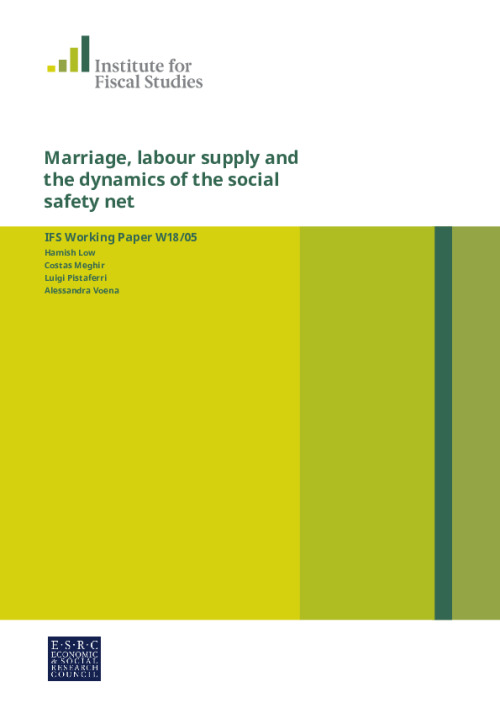Downloads

WP201805.pdf
PDF | 1.21 MB
The 1996 PRWORA reform introduced time limits on the receipt of welfare in the United States. We use variation by state and across demographic groups to provide reduced form evidence showing that such limits led to a fall in welfare claims (partly due to "banking" benefi ts for future use), a rise in employment, and a decline in divorce rates. We then specify and estimate a life-cycle model of marriage, labor supply and divorce under limited commitment to better understand the mechanisms behind these behavioral responses, carry out counterfactual analysis with longer run impacts and evaluate the welfare effects of the program. Based on the model, which reproduces the reduced form estimates, we show that among low educated women, instead of relying on TANF, single mothers work more, more mothers remain married, some move to relying only on food stamps and, in ex-ante welfare terms, women are worse off.
Authors

Research Fellow University of Oxford
Hamish is the James Meade Professor of Economics at the University of Oxford, a Professorial Fellow of Nuffield College and a Research Fellow at IFS.

Research Fellow Yale University
Costas is a Research Fellow of the IFS and a Professor of Economics at Yale University and a Visiting Professor at University College London.

Stanford University

University of Chicago
Working Paper details
- DOI
- 10.1920/wp.ifs.2018.W1805
- Publisher
- The IFS
Suggested citation
Low, H et al. (2018). Marriage, labour supply and the dynamics of the social safety net. London: The IFS. Available at: https://ifs.org.uk/publications/marriage-labour-supply-and-dynamics-social-safety-net (accessed: 18 April 2024).
More from IFS
Understand this issue

Cutting inheritance tax isn’t quite as simple as its proponents suggest
20 November 2023

Retirement is not always a choice that workers can afford to make
6 November 2023

A mess has been made of Child Benefit, and the clear-up operation may not be easy
29 March 2024
Policy analysis

Recent trends in public sector pay
26 March 2024

Gap between higher- and lower-paid public sector workers falls by more than a third since 2007 as doctors and experienced teachers have faced unprecedented pay cuts
26 March 2024

Progression of nurses within the NHS
12 April 2024
Academic research

Labour market inequality and the changing life cycle profile of male and female wages
15 April 2024

Interpreting cohort profiles of lifecycle earnings volatility
15 April 2024

There and back again: women’s marginal commuting costs
2 April 2024